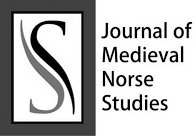‘È ANDATA COME PENSAVO’: TRASGRESSIONE DELLO SCRIPT RITUALE NELLA GÍSLA SAGA SÚRSSONAR
Abstract
Analyzing the Norse sagas through Cognitive Poetics allows us to trace mental structures as cognitive schemes (frames) that helping to plan problem-solving strategies through the creative imagination. Different frames structure a script, which is a complex scenario of predetermined sequences of actions, such as rituals. When these scripts undergo alterations in expectations, this causes an emotional response that acts as a cognitive attractor. Taking Gísla saga Súrssonar as an example, we can see how the ritual script at the beginning of the saga, in which the protagonists fail a pact of blood-brotherhood, is transgressed setting off a chain of dire consequences. This transgression activates emotional cognitive responses in the reader, who, in noting the transgression of a ritual script, predicts the negative outcome of the story. The reader of the saga foresees an adverse fate to the protagonists, also due to the presumed superknowledge and super-perception of the deities who, called to witness a blood pact not respected, deny their favor to the protagonists, leaving them at the mercy of their own destiny. The confirmation of the disgraceful conclusion could lead to prosocial behavior in readers, activating the awareness of personal responsibility and the consequences of one's actions.
Downloads
Downloads
Published
Issue
Section
License
The author (s) of the original submitted undertake to comply with the following:
- All authors are publicly responsible for it.
- The authors claim that this original is their own and that they assume full responsibility to third parties, whether moral or patrimonial, by reason of its content, stating that the work does not infringe any intellectual property rights of third parties.
- The author (s) agree to the copyrights of the original to Scandia Journal, to which they grant permission for its reproduction, editing and online publication.
- The author (s) grant their copyright of their original to the Scandia Journal, licensed under the Creative Commons Attribution License, which allows the sharing of this work with the acknowledgment of their authorship.
- The author (s) have permission and are encouraged to cite and distribute their original.



